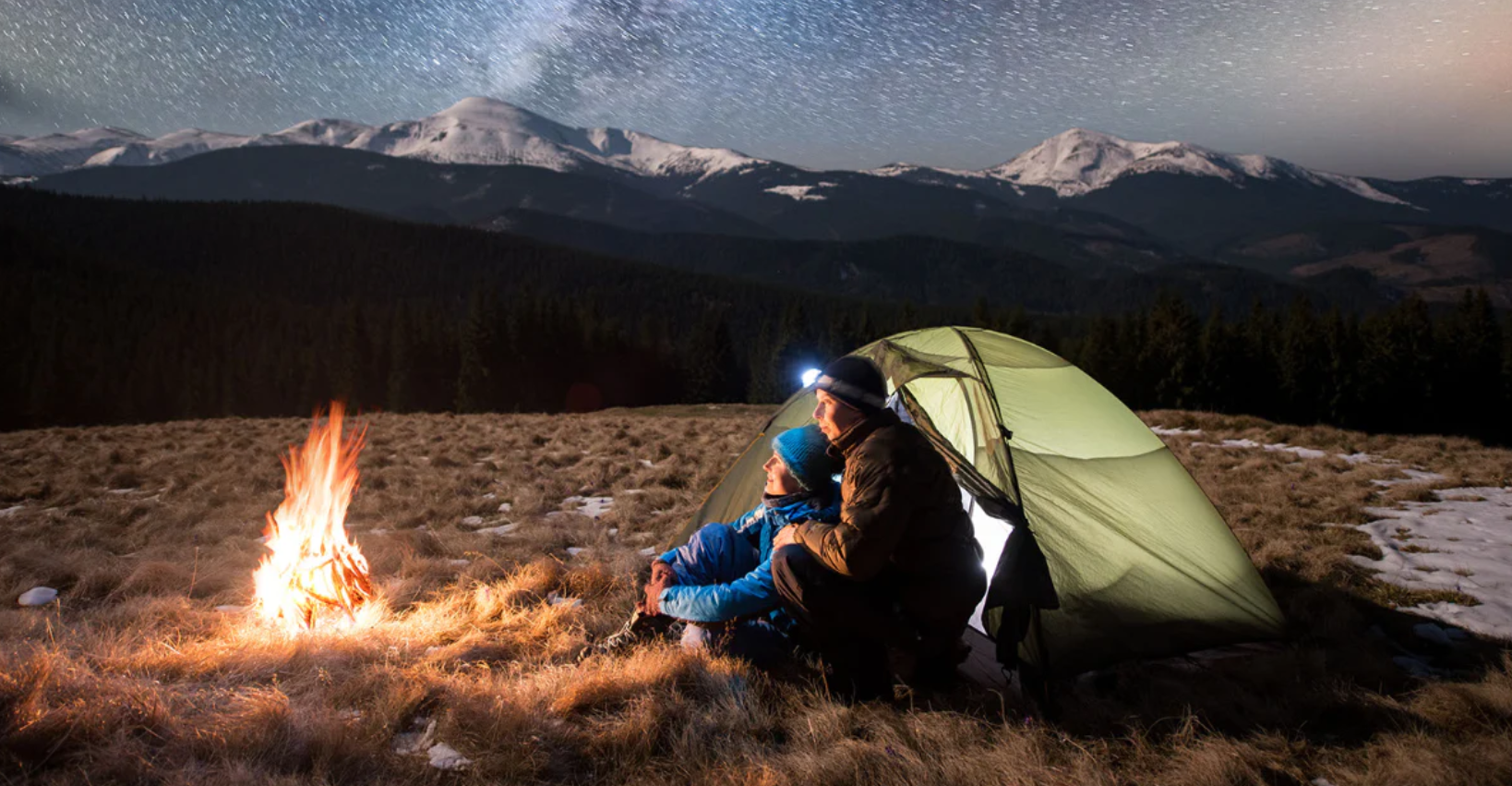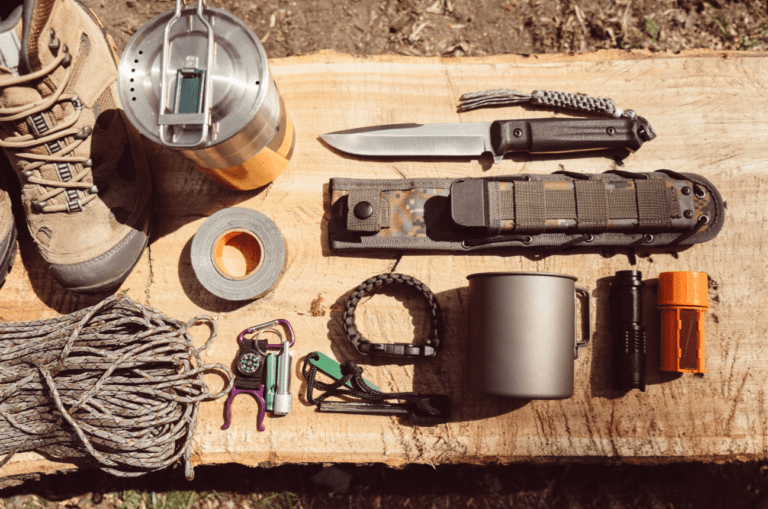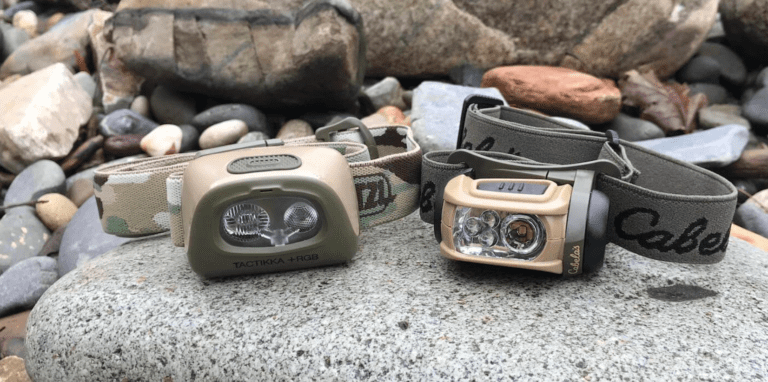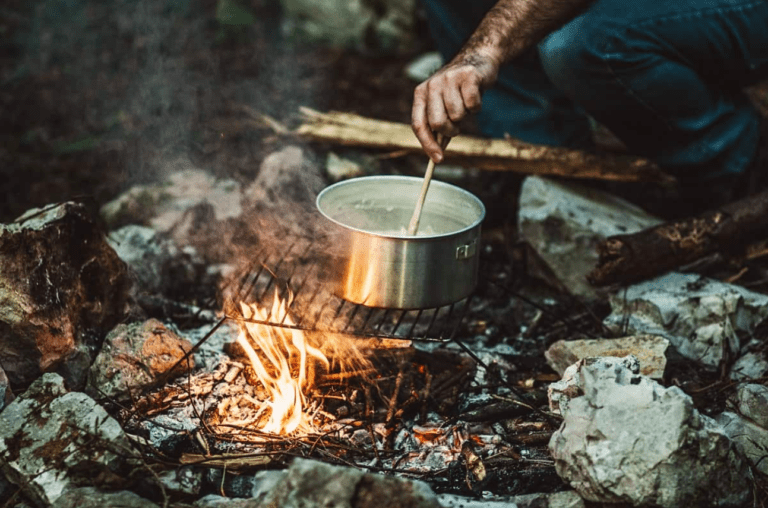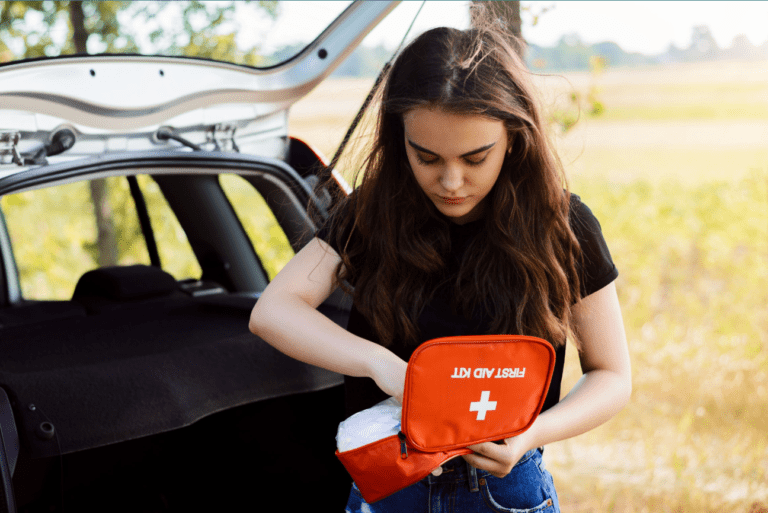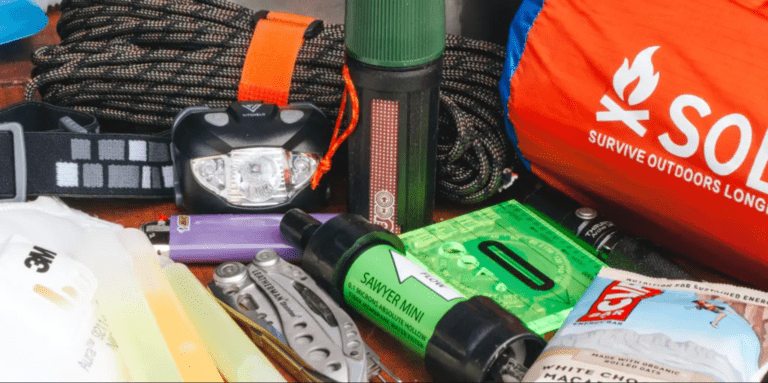Alone Survival Gear
Participating Gear list
Each individual participant brings clothing, protection, and survival gear to the Arctic. Here is a list of all the standard items that participants are given, as well as the master list from which they are allowed to choose ten special items.
*These items do not count towards the 10 special items, but cannot exceed the approved quota for each.

How does one keep warm in the Arctic? Participants are allowed to bring 2 hats.
- 1 pair of high-toed hunting boots
- 1 pair of waterproof arctic winter boots
- 1 T-shirt
- 1 fleece/wool shirt
- 2 Wool, wool or cotton sweaters
- 6 pairs of woolen socks
- 2 hats
- 2 Buffs or neck gaiters
- 1 Shemug or scarf
- 4 pairs of gloves
- 2 pairs of underwear/briefs
- 1 insulated parka-style jacket
- 2 pairs of outer trousers/bibs
- 1 pair of fully insulated or waterproof winter trousers/bibs
- 1 waterproof insulated shell/jacket
- 2 pairs of thermal underwear
- 1 pair of gaiters
- 1 leather belt
- 1 toothbrush
- 1 pair of glasses
- 1 personal photo
Specifications:
- Any garment with full zip is considered a jacket.
- A buckskin garment is considered a shirt if it has no more than a 1⁄2 or 3⁄4 zipper or a full set of buttons.
- A Buckskin garment is considered a sweater if it is a pullover.
- A buckskin garment is considered a jacket if it has a full zipper.
A selection list of 10 items
*Participants select 10 items from the following list.
*Participants are responsible for sourcing and purchasing their own 10 items.
Participants can choose only 2 food items.
No duplicate items may be taken from the following list.
Any loop of wire attached to any tool, or weapon or used as a neck loop will deduct 80m of paracord, cotton cord, or trapping wire allowance from participants.
Knives are very useful for both construction and hunting in the wilderness.
Shelter
- 12×12 ground cloth/tarp
- 8-mm Climbing Rope – 10M
- 550 Paracord – 80m
- 3 mm cotton cord – 40 meters
Bedding
- 1 multi-season sleeping bag
- 1 wife bag
- 1 sleeping pad
- 1 swing
Cooking
- 1 large pot
- 1 steel skillet
- 1 flint or Ferro rod set with standard-size striker
- 1 enamel bowl for eating
- 1 tbsp
- 1 canteen/water bottle
Hygenic
- 1 standard size bar of soap
- 1 8 oz tube of toothpaste
- 1 face flannel
- 1 40mm roll of dental floss
- 1 small bottle of bio shower soap
- 1 shaving razor
- 1 towel
- 1 comb.
Participants need food to survive. A bow is a tool that helps achieve them.
Hunting
- 1 300 yd roll of single filament fishing line max weight test 20 lbs + 35 different barbells hooks
- 1 Primitive Bow Recurve or Longbow + 9x Arrows
- 1 small gauge gill net
- 1 slingshot/catapult + 30 steel ball bearings + 1 replacement band
- 1 bag of pure fodder
- 2 pounds of 20, 21 or 22 gauge stainless steel and/or brass snare(s)
- 3 lbs of a solid block of salt
Food (maximum 2 items)
- 2 pounds of beef jerky
- 2 lbs dry pulses/beans/lentil mix
- 2 pounds of biltong
- 2 lb. Hard-Tack Military Biscuits
- 2 pounds of chocolate
- 2 pounds of pemmican
- 2 lbs of GORP
- 2 pounds of flour
- 2/3 lb rice / 2/3 lb sugar / 2/3 lb salt
Tools
- 1 pocket knife
- 1 hunting knife
- 1 Leatherman Multi Tool or similar
- 1 sharpening stone
- 1 roll of duct tape or 1 roll of electrical tape
- 1 small shovel
- 1 small sewing kit
- 1 carabiner
- 1 LED flashlight
- 1 pair of ice spikes
- 1 Scotch Eyed Ager
- 1 adze
- 1 2-handed draw knife
- 1 hatchet
- 1 saw
- 1 axe
Prohibited items
*This list is not exhaustive, any items not listed in the previous lists are prohibited items. This list serves as an example.
Don’t get caught up with the compass on ‘alone’. This, along with the items listed below, is prohibited.
- Fuel, lighter or matches
- Bug spray/mosquito repellent
- Sunscreen/Chapstick
- Sunglasses or prescription transition lenses.
- Eyeglasses
- Beauty products
- Map
- Compass
- Unapproved technology
- Professional traps
- Firearms of any kind
- Ammunition
- Explosives or explosives
- Animal poison
- Professional fishing rods.
- Fishing lures, flies, bait kits
- Fishing nets
- Food/Beverages
- Decoys
- Animal calls
- The tree is standing.
- Professional Bows / Crossbows
- Any scope
- Tents or shelters.
- Stoves, pressure cookers or other cooking appliances
- Hydration pack
- Fire pits
- Electric or propane lanterns
- Inflatable boats
- Filtration, purification devices, iodine tablets
- Cooler or food storage box
Solo Survival Gear [Best Gear and Strategies for Solo Survival in Beast Country – 2022]
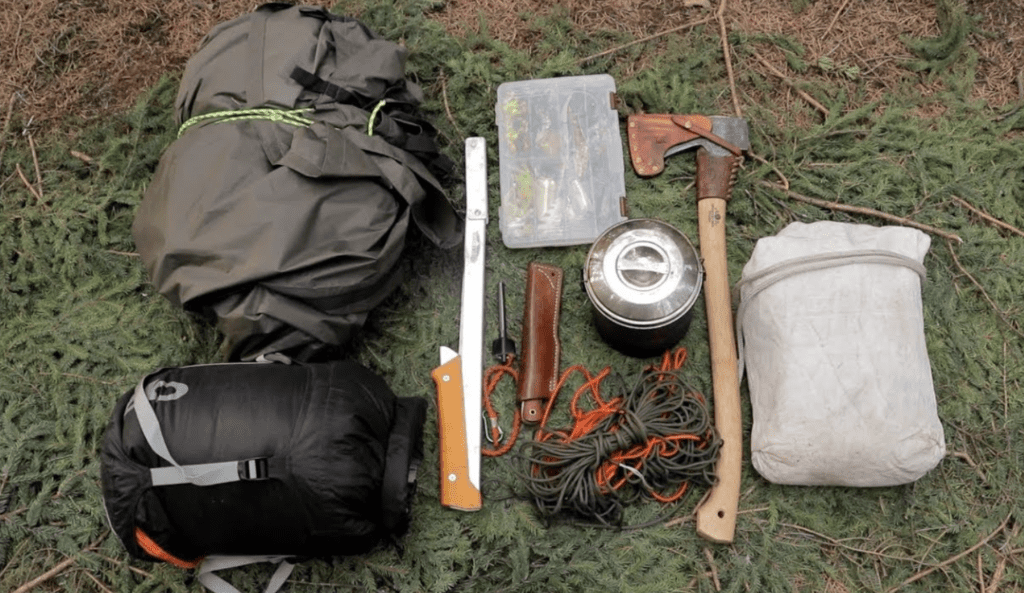
Well, I’m man enough to admit it – I’m a big fan of the TV survival show Alone. Sure, it’s a ‘reality show’ with some typically forced drama to deal with. But still, I’m all for it. And if you’re an adventurer, outdoor enthusiast, survivalist, or prepper, how could you not be?
At its heart, it’s old-school survival, man against nature… you know, the good stuff.
And solo survival stuff – well, that’s where it’s at and what we’re going to analyze.
For those of you not familiar with the show, Alone is a television series on the History Channel that takes 10 aspiring contestants to the harshest, most remote locations in the world to see who has There are survival skills, grit and downright badassness. . The longest
As viewers, we get to see the contestants try to survive alone in the wilderness with nothing but the 10 survival items they are allowed to bring. One by one, contestants are tapped out due to grinding realities. Starvation, hypothermia, and injury take their toll. Sometimes, it’s the sheer mental stress of prolonged isolation that sends them packing.
In the end, the last man or woman standing goes home with the satisfaction of knowing they had the skills and toughness to outlast their competition for months.
Oh yeah, they also win between $500,000 – $1 million for their troubles. With so much pride and CASH on the line, things could get very interesting.
Each season of Alone takes place in a different place – but all are cold and remote.
If you’ve never seen it, you might be wondering what’s so interesting about watching random strangers talk into a fancy GoPro for 60, 70, 100 days?
For me, it’s watching fellow adventurers struggle to survive—adapting and learning how to build shelters and their surroundings—in addition to the 10 allowable items on their solo survival gear list. Finding food using nothing.
Each of them must catch, trap, kill and forage enough calories to keep their bodies from killing themselves.
Some become expert trappers – rabbits, squirrels and any small game they can catch.
Others are incredibly knowledgeable about all things flora and fauna. They focus their energy on foraging – gathering all kinds of edible plants, berries and roots.
Still others focus on fishing or hunting, such as deer or moose.
In one of the most talked about episodes, a contestant in season 7, Roland injured a musk ox with his bow. But it was not the killing bullet. With arrows, he traced the wounded animal for miles, but the bull refused to die.
Finally, desperate for food and with night falling, Roland charges the bull, stabs him with the only weapon he has, his fixed-blade belt knife, and kills him. The meat he got from this kill enabled him to survive alone in the arctic winter for 100 days. It was literally a million dollar trick for him. For any outdoor adventure or survival, this is must-see TV!
In addition to food challenges, each participant needs to build a shelter that can withstand strong arctic winds and temperatures that can drop to 40 degrees below zero.
But this article isn’t about the show…exactly. It’s about the gear.
How do the participants manage to build shelters, hunt fish and successfully survive for months in the harshest conditions? It’s all about skills – and GEAR, kids.
Let’s take a deep dive into the lone survival gear items that helped top survivalists actually win it all.
Contestants are given a list of 40 pre-approved items. From this list, they are allowed to choose the 10 items that they think will best help them survive. The graph below shows the most popular solo survival gear chosen by the winners of the first 8 seasons:

Sleeping Bag – 100%
A good sleeping bag is an obvious choice at the top of your solo survival gear list. At the start of each single season, temperatures typically hover around 40 degrees Fahrenheit and then steadily drop as the days and months pass. By the end of the show, temperatures drop well below freezing, with subzero temperatures not uncommon. Season 7 saw a bone-chilling -40 degrees Fahrenheit – that’s cool baby.
At these brutal temperatures, hypothermia can set in quickly. When you combine sub-zero temperatures with crude makeshift shelters and near-starvation-level caloric intake, it’s easy to see how important the right sleeping bag is to warmth and survival.
Choosing the best sleeping bag for you personally depends on how you plan to use it… Will you be backpacking? Mountaineering? Do you want a lightweight multi-season bag or an expedition-quality bag? Do you like mummy bags or would you prefer the extra room for a co-sleeper (or possibly a partner)?
Our #1 Pick for Best Survival Sleeping Bag (0F): Marmot Lithium 0 Degree (F) Sleeping Bag
What we like about it.
Marmot Lithium is rated at 0 degrees F. With high quality 800 fill power down insulation, this bag will keep you toasty. And on warm nights, a fold-down secondary zipper lets you get some air if you start to get a little warm.
The Lithium is constructed with Pertex Quantum 20D ripstop nylon, offering ultra-lightweight strength and durability. Marmot’s Down Defender treatment adds water resistance to the package.
Comfort and warmth are the ultimate goals here, and with Lithium, Marmot shows they achieve it. They have added a few extra touches to ensure both of these goals are met.
Personally, I can never sleep with cold feet. But a restless night pales in comparison to the possibility of frostbite—a potentially dire situation in the backcountry.
For added comfort and warmth, there is an anatomically designed foot box with additional padding in lithium. A wide shoulder area provides some welcome extra room on long nights, while curved horizontal baffles help keep the fill in place, reducing cold spots and making it easier to regulate your temperature. are
At 2 lbs, 9.5 oz (1176g), the Lithium is lightweight and compresses well into its stuff sack – measuring about 8”x16”. This impressive weight-to-warmth ratio makes it perfect for backpacking and mountaineering adventures.
Finally, while bright orange might not be everyone’s cup of tea, having such a bold color in your pack is useful if you’re unlucky enough to find yourself in a search and rescue situation.
Watch out for things
The first thing to note is the price – this bag is not cheap. But at a typical price of between $500-$600, it’s really not bad for a high-quality ultra-light 0F bag.
Minor gripes include an interior pocket that’s too small to accommodate many full-size cell phones, as well as a stuff sack that doesn’t include compression straps like many other Marmot models do.
Our budget pick for the best survival sleeping bag: The Hyke & Byke Eolus 0(F) Sleeping Bag
What we like about it.
The obvious starting point here is price. At around 60% of other high-quality 0 F bags like the Marmot Lithium above, you get a quality sleeping bag that won’t break the bank.
You get 800 full power goose down insulation for warmth, 400T 20D ripstop nylon with a hydrophobic water repellent coating for lightweight strength and water resistance, plus anti-snag zippers.
The Hyke & Byke Eolus comes in three sizes – short for people up to 5’6″, short for people between 5’7″ – 6’1″ and 6’2″ – 6’6″. long for
The Eolus is only slightly heavier than the Lithium at 3lbs 3oz (998g) for the regular size, and compresses to 7″x10″ in its compression sack.
Watch out for things
The main potential drawback of the Eolus is its vertical vertigo. Compared to the horizontal spirals found on most high-end sleeping bags, about 5% of Eolus users found that the filling shifted downwards spirally after repeated use, leaving very little space – this It was especially obvious under the back.
Survival X – 100%
As the famous saying goes, “speak softly and carry a big axe” (ok, maybe that’s not the right quote).
But it’s no surprise that every winner of the show decided to add an ax to their list of solo survival gear. It’s been an essential tool throughout the seasons – contestants have used them for everything from shelters to animal protection to food storage, and even to build a boat or two.
And don’t even think about trying to survive months in subzero temps without a constant supply of wood to provide heat, boil water, and cook whatever food you want.
Our No. 1 pick for the best survival ax: The Estong E44A Campers X
What we like about it.
The weakest part of any ax is the junction where the head meets the handle. Eastong solves this problem by drop-forging and tempering its Campers X from a single piece of American steel, making it extremely durable and reliable in survival situations.
The cutting edge is sharp by hand, and the dimpled vinyl grip is durable and comfortable. Estwing claims the grip reduces vibration by 70% – I can’t confirm the exact %, but it seems to work as designed.
For the final touch, the E44A comes with a belt loop with ballistic nylon sheath that protects the cutting edge while keeping the tool close.
Overall, the Eastwing is a versatile tool for burning and burning wood, or cutting small trees, logs and branches. It’s rugged enough for serious outdoor use, yet at 18.5 inches and 3 pounds, it’s small enough to be useful in backpacking, camping or SHTF situations. This is definitely solo survival stuff.
Watch out for things
In terms of performance and quality, this ax can handle almost anything except splitting large fresh logs. However at 18.5″ and 3 pounds, it’s a bit of a hybrid – like a cross between a hatchet and a full-sized axe. Which begs the question – is it the best of both worlds or not enough of both? Our I think it’s the former—which is why it’s our pick for the best survival ax.
Below is a picture of the impressive shelter built by Randy in Season 5. Not only is it a very solid structure, but its insulated walls and roof provide a relatively comfortable living experience given the rugged conditions. He even added a pretty sweet fireplace and mantel for good measure. Impressive given the limited survival tools available.
Survival Ara – 100%
Like an axe, a good saw is almost essential for performing basic survival tasks such as building shelter, cutting firewood, or crafting simple fishing rods and nets. A few competitors were even creative (or desperate?) enough to build crude rafts and kayaks to try to access deeper fishing waters.
Our #1 pick for survival quality: The Silky Katana Boy Professional 500mm
What we like about it.
The blade on this Japanese folding “samurai saw” is made of high quality SK4 high carbon steel. It is durable, light weight and extremely fast. It is versatile enough to be used as a chainsaw alternative for felling small trees or cutting firewood.
Because it’s light and compact, it’s great for outdoor adventures in the bush. Heck, you might even want to throw it on your Jeep, RV, SUV or even your quad to come in handy when needed. Either way, the Katana Boy made it onto many a competitor’s solo survival gear list, and it will be on ours too.
Things to watch out for
We strongly recommend wearing heavy duty (leather) gloves when using the Katana Boy. As mentioned earlier, this BAD BOY is SHARP, and the folding mechanism can be a bit tricky – you don’t want to accidentally close the blade on your fingers.
Ferro Rod – 88%
Fire is one of the basic necessities for survival. Whether it’s for warmth, cooking, water purification, or protection against predators, the ability to quickly put out a fire is absolutely critical to your ability to survive in the wild.
Given the harsh environment of the Alone, building a fire is often one of the first things contestants do after landing. So it’s no surprise that 88% of all winners choose the ferro rod as one of their top ten pieces of solo survival gear. Because of its excellent fire-starting properties, it is an almost indispensable tool in survival situations and a worthy addition to any survival kit.
A ferrocerium rod (or ferro rod for short), is a metal alloy rod that produces sparks between 3000 – 6000 degrees Fahrenheit when struck by a metal striker. Many furrow rods come with an attached striker, but the back of a knife or multi-tool can also be used as an effective striker.
Here’s a simple but effective guide to putting out a fire with a Ferro rod…
Our No. 1 pick for a survival Ferro rod: the Uberleben Kraftig Fire Starter
What we like about it.
The Kraftig Fire Starter is made from a solid ½” (12.5mm) thick ferrocerium rod that throws sparks up to 5,500 degrees F (3,000 C) to start your fire at any height or weather.
It is available in two sizes – the 5” weighs 4.2oz (12cm/119g), and the 8” weighs 6.2oz (20.32cm/175g). Both sizes are soft enough to throw lots of sparks, yet durable enough to withstand 20,000 strikes.
All Kraftig fire starter rods come with a shock cord lanyard and straight edge striker that can be used with a tinder scraper, map scale, roller, hex wrench and last but certainly not least… a bottle opener – because let’s face it. Can, you can. . There is never enough of them.
Things to watch out for
Honestly, not much. The Kraftig Fire Starter is a simple, effective tool. If anyone made me name a concern, it’s that the attached multi-tool striker isn’t very effective at generating sparks from the back of the knife blade – but really, it’s just fiddly.
Camping Pot – 88%
We’re not going to get too crazy analyzing this piece of equipment. It’s certainly not a sexy item, but some version of a camping pot is an essential item on your solo survival gear list for boiling water and cooking whatever food can be hunted, trapped or foraged.
To get every possible nutrient and calorie from their food sources, most of the meals that contestants prepare themselves are broths of some kind – meat, fish, insects, plants, berries, even that boiled water with pieces of bark – whatever is available.
So, there is no need for anything here. In general, look for stainless steel or other sturdy (washable) metal, at least a 2-quart capacity, wide mouth and a handle should do the job.
Our No. 1 pick for backcountry cooking: the Solo Stove Pot 1800
What we like about it.
The Solo 1800 is made of lightweight yet strong food-grade stainless steel. It has no additional non-stick coating so you can clean without worrying about scratching or damaging the finish.
Its simple yet effective design includes a bell handle for hanging over the heat source, spout, double fold-out handles and volume markings in OZ and ML are machined directly into the metal so they won’t wear off over time. It also includes a handy nylon drawstring stuff sack to keep it separate from other gear in your pack.
Things to watch out for
The Solo Pot 1800 is designed to be lightweight and portable. As a result, some people find the metal too thin for their liking. Additionally, the lid cannot be used as a small skillet, as on some competing camp cookware such as the popular GSI Aluminum Dutch Oven.
Overall, a great little lightweight vessel for backpacking, camping or survival/bug out bags.
Fishing Kit – 75%
It’s very simple – if you want to survive and win, you have to eat.
Because fish are rich in healthy fats, protein and omega-3s, the ability to reliably catch them in the backcountry can literally be a game changer. If I were a betting man, I’d go with a successful fisherman versus someone trying to subsist entirely on roots and berries, especially when the harsh winter weather sets in.
In the official solo survival gear list, “fishing kit” means 300 yards of line and 25 barbell hooks. But for real-life survival situations, we’re going to focus on a simple kit that you can store in your pack or bug-out bag.
Our #1 Pick for Survival Fishing Kit: The Reign of Wasteland Survival Fishing Kit
What we like about it.
It’s small, compact and well-packaged – the 4oz tin comes with a waterproof screw top so it won’t accidentally drop open, sharp hooks and lures into your bag or bug-out bag.
Unlike many competitors that come with 50ft of a single test line, the Westland Kit has 260ft of line split between 15lb and 30lb tests, so you can choose the right line for your fishing conditions. .
Plus, with 33 hooks, 10 lures, multiple bobbers, sinkers, and the extra line mentioned above, you can easily set multiple lines to improve your chances of landing a tempting meal. .
Things to watch out for
Like most survival fishing kits available, it’s a bit pricey for what you get. See, you can easily customize your own kit for less money. But the RTW Survival Fishing Kit is small, convenient, well-sealed and an instant no-brainer grab-and-go – this little kit does the trick and will definitely make it onto our solo survival gear list.
Trapping Wire – 75%
Like the fishing kit above, string fishing is all about constantly searching for food. In a harsh, unpredictable environment, having multiple sources of calories and nutrients is critical. If you want to survive, you have to stoke the human furnace.
Many competitors go solo with the confidence that they will be able to catch a shoal of fish or bag a big game with ease. However, reality rarely matches their lofty expectations (and egos).
Season 8 offered a great lesson in humility. Most competitors believed that fishing on the shores of Canada’s Lake Chalco would provide an abundant source of food. Instead, they found terrible fishing conditions – near constant winds and waves pounding the shallow coastline, which made fishing with their makeshift kits extremely difficult and unreliable.
With terrible fishing conditions and almost no big game available, competitors were forced to find other sources of protein. As a result, anyone who was adept at setting traps to catch rabbits and other small game benefited greatly.
Trapping wire has the added benefit of being a multi-use item, useful for projects such as lashing support poles together, repairing gear, making lures and securing gill nets. It definitely has a place in our solo survival gear items.
Our #1 Choice for Survival Trapping Wire: Master Wire Supply 22 Gauge Stainless Steel
What we like about it.
Really, most any brand will do. The key is getting the right gauge and material for your small game target. If it’s too thick, your traps will be too visible and prey will avoid them like the plague. Too thin, and the wire may break, leaving your precious food source exposed.
The sweet spot is between 20 and 24 gauge – as a reminder, the higher the gauge the thinner the wire. We like the 22 gauge because it’s thin enough to be flexible, but strong enough to safely snare rabbits and most other small game you’ll target.
Because the master wire supply is stainless steel, it will resist rust and last longer in harsh, wet conditions. At 100 feet long, it’s long enough for you to set up multiple traps and have plenty left over for survival projects or other SHTF situations. And because it comes on a spool, it’s easier to work with than carrying around some random coil of wire that becomes a tangled mess – one of my personal pet peeves.
Multitool – 75%
During Seasons 1-3 of Alone, only 5 of the first 50 contestants chose a multitool as one of their 10 pieces of survival equipment – that’s only 10%. However, by Seasons 7 and 8, this dynamic changed drastically as 16 of the 20 contestants brought a multi-tool with them – good for a full 80%.
As the saying goes, “Imitation is the sincerest form of flattery.” Clearly, contestants began to pay attention to what gear worked best for past winners, and simply copied them.
In this case, it’s a smart strategy. With limited gear options, it makes sense to choose something that can perform multiple tasks, such as cutting wire, shaping fishing lures, making traps and preparing food – with a good multi-tool blade. , you can also trim, skin and file your cache. . .
Personally I bring my Leatherman Signal everywhere. But if I’m gearing up for months in the backcountry, I’ll pick something with even more versatility. To find the best multitool for you and your survival gear needs, check out our detailed review of the 10 best survival multitools here.
So there you have it. A collection of 8 essential solo survival gear items used by at least 75% of adventure reality show winners.
If you want to read something more in-depth about first-hand solo experience, Surviving by Season 8 winner Clay Hayes is a really good read.
Gear List Season 9 – Contender 10 Items Gear List Season 9 – Contender 10 Items
In this article, we take a look at the Gear List Season 9 alone and specifically what each contestant chose to take with them. All this information is taken from the History Channel website and arranged on one page for your convenience.
Season 9 is being filmed on Inuit land in Nuntsiavat, Labrador in eastern Canada, in the Big River region near the community of Makkovik. There are plenty of black bears, fish like trout and salmon, squirrels, grouse, rabbits and other wildlife that could potentially provide much-needed sustenance.
As always, it is impossible to predict who will win but whoever knows how to shoot the bow correctly has an immediate advantage. Other people benefit from the power to quickly build a solid shelter so they can focus entirely on food. Other contestants have the benefit of age and wisdom, knowing which ones can heal you will be a huge key to long-term survival – if you have to call the doctor, you lose. And out of the game.
Season 9 of Lonely Gearlist
Each contestant has a very strict limit on what they can and cannot take with them. There are items that each contestant is allowed and then each contestant gets to pick 10 items from a limited list of survival resources. The choices you make before you go can have a huge impact on your success and so it’s worth reading and deciding what you’ll take and then comparing it to the competition further down the page. .
Clothing allowance
Here is a list of the items of clothing that each competitor is allowed to carry that do not count among their 10 items.
- 1 x pair of high leg hunting boots
- 1 x pair of waterproof arctic winter boots
- 1 x T-shirt
- 1 x Fleece / Fleece Shirt
- 2 x wool, fleece, or cotton sweaters
- 6 x pairs of woolen socks
- 2 x bush caps
- 2 x buffs or neck gaiters
- 1 x Shawl or scarf
- 4 x pairs of gloves
- 2 x pairs of underwear/briefs
- 1 x Insulated Parka Style Jacket
- 2 x pairs of outer trousers/bibs
- 1 x pair of fully insulated or waterproof winter trousers/bibs
- 1 x Waterproof Insulated Shell/Jacket
- 2 x pairs of thermal underwear
- 1 x pair of gaiters
- 1 x Leather Belt
- 1 x Toothbrush
- 1 x pair of glasses
- 1 x personal photo
10 individual items
This is a list of items from which each participant can select 10 of their choice. The only rules with this choice are that you can only take 2 items containing food, you cannot take duplicates of the same item, and you must source the item yourself.
Shelter
- 1 x 12 × 12 ground cloth/tarp
- 1 x 8-mm climbing rope – 10M
- 1 x 550 Paracord – 80m
- 1 x 3 mm cotton cord – 40 meters
- the bed
- 1 x Multi Seasonal Sleeping Bag
- 1 x wife bag
- 1 x Sleeping Pad
- 1 x Swing
Cooking
1 x Large pot
1 x Steel Frying Pan
1 x flint or ferro rod set with standard size striker
1 x enamel bowl for food
1 x spoon
1 x Canteen/Water Bottle
hygenic
1 x standard size bar of soap
1 x 8 oz tube of toothpaste
1 x Face Flannel
1 x 40-mm roll of dental floss
1 small bottle of bio shower soap
1 x Shaving Razor
1 x Towel
1 x comb.
Hunting
- 1 x 300-yd roll of single filament fishing line max 20 lbs weight test + 35 assorted barbellless hooks
- 1 x Primitive Bow Recurve or Longbow + 9 x Arrows
- 1 x Small Gauge Gill Net
- 1 x Sling Shot/Catapult + 30 Steel Ball Bearings + 1 Replacement Band
- 1 x net feed bag
- 2 pounds of 20, 21 or 22 gauge stainless steel and/or brass snare(s)
- 3 lbs of a solid block of salt
- Food (maximum 2 items)
- 2 pounds of beef jerky
- 2 lbs dry pulses/beans/lentil mix
- 2 pounds of biltong
- 2 lb. Hard-Tack Military Biscuits
- 2 pounds of chocolate
- 2 pounds of pemmican
- 2 lbs of GORP
- 2 pounds of flour
- 2/3 lb rice / 2/3 lb sugar / 2/3 lb salt
